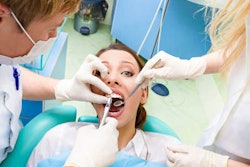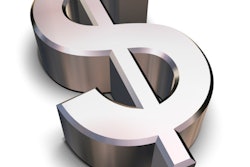
Earnings for general dentists in the U.S. remained stable in 2015, but they appear unlikely to return to prerecession growth levels, according to a new research brief by the ADA's Health Policy Institute. In addition, general dentists reported being busier in 2015, but there is still significant unused capacity in the dental care system, the authors noted.
 Marko Vujicic, PhD, chief economist and vice president of the ADA Health Policy Institute. Image courtesy of the ADA.
Marko Vujicic, PhD, chief economist and vice president of the ADA Health Policy Institute. Image courtesy of the ADA.With both unused dental care capacity and significant uncertainty remaining in the dental market, more data are necessary to determine if the current sluggish market is here to stay or if it could be turning around, they added.
"With six full years of post-Great Recession data, it is safe to say that dentist earnings are not bouncing back," wrote researchers Bradley Munson and Marko Vujicic, PhD. Munson is a senior research analyst at the Health Policy Institute, and Vujicic is the institute's chief economist and vice president.
The new report included data from the Health Policy Institute's annual Survey of Dental Practice, which includes a nationally representative sample of 4,000 to 17,000 dentists in private practice, and focused on responses from 1982 to 2015. The response rate in 2015 was 9.8%.
Earnings up but not significantly
Average annual net income was $179,960 in 2015 for general dentists and $320,460 for specialists, according to the survey findings. Meanwhile, average annual net income was $195,200 for owner general dentists and $132,370 for nonowners. A comparison with 2015 numbers is shown in the table below.
| Average net income for dentists in 2014 and 2015 | ||
| 2014 | 2015 | |
| General dentists | $174,780 | $179,960 |
| Specialist | $322,200 | $320,460 |
| Owner | $183,340 | $195,200 |
| Nonowner | $134,020 | $132,370 |
The change in dentists' earnings in 2015, while an increase, was not statistically significant and closes out a 10-year period during which average net income significantly decreased for general dentists.
Adjusted for inflation, average net income has decreased significantly for general dentists from a peak of $219,638 in 2005. Net income for specialists peaked in 2007 and decreased a statistically insignificant amount in 2015.
Not busy enough
The percentage of general dentists surveyed who said they were "not busy enough" decreased significantly, from 34% in 2014 to 27% in 2015. Among specialists, this percentage decreased from 31% in 2014 to 30% in 2015, which was not statistically significant. Among solo practitioners, 32% reported not being busy enough in 2015, compared with 19% of nonowner general dentists.
“With six full years of post-Great Recession data, it is safe to say that dentist earnings are not bouncing back.”
The researchers noted that their analysis "suggests that we could be seeing a turnaround, or at least a bottoming out, of the multiyear trend of reduced busyness."
Average wait time for a general dentist appointment was 5.3 days in 2015, a significant increase from a low of 4.5 days in 2012 after dropping from 9.6 days in 2001. Average wait time for a new patient was 6.4 days in 2015, a significant increase from 5.3 days in 2012.
Among general dentists, 33% said their patient volume was up in 2015, as did 40% of specialists. Meanwhile, 25% of general dentists and specialists said their patient volume was down.
"Dentists were slightly busier in 2015, but there is still significant unused capacity in the dental care system," the authors concluded.
In transition
The report authors emphasized that dentistry is a profession in transition. Previous ADA analysis has suggested that a "new normal" may be developing in terms of dental spending, demand for care, and earnings.
"While the direction of healthcare reform in the U.S. is incredibly uncertain, much of the proposed reforms to the Affordable Care Act are likely to decrease demand for dental care," the authors wrote. "The impact on dentist net incomes from this potential influx of Medicaid patients is unclear."
The data from 2016 would provide more insight, they noted.
"Looking forward, 2016 data are likely to provide a better sense of whether the dental care economy is turning around or whether a 'new normal' is entrenched," the authors wrote.



















